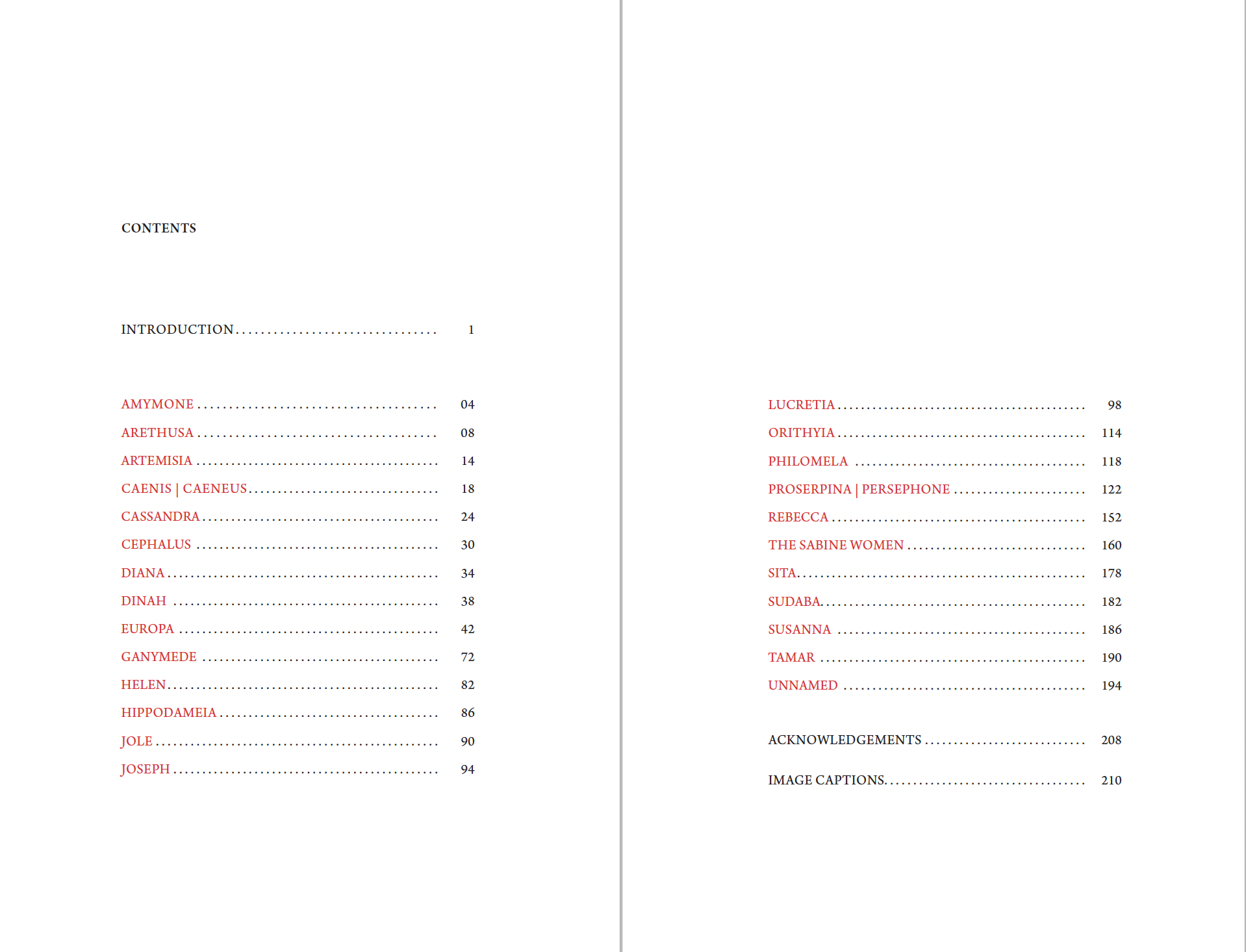Every Rape in the Met Museum E-book
Every Rape in the Met Museum E-book
This book is made up of text drawn from the Metropolitan Museum of Art’s collection database available through their website. The text includes cataloguing information such as the title, medium, dimensions, and provenance of a piece, as well as the contextual catalogue entries from which museum labels are drawn.
The project began with textual analysis of the language that the museum uses to describe images of rape. I searched the collection database for the keyword ‘rape’, which returned 181 results
(with two additional works titled The Rape of the Lock which
I have omitted.) Not all of these pieces have rape in the title: some have it in the description, and others turn up in the search without my knowing why—perhaps through related objects, or through invisible metadata. When I walk around the museum, I find hundreds more depictions of the same stories with different descriptions, such as ‘abduction.’ These have not been included. Nor have all the likely violations by and of those who have posed for or made the art, who have collected it or been lowly paid guards of it, who have had grand careers or been unpaid interns, that is—all the unspectacular, ordinary violence that takes place in and around the museum. The only exception is a reference to Artemisia Gentileschi, whose rapist’s work is in the museum collection;
his conviction for her rape is the final sentence of an otherwise anodyne catalogue entry. In some ways this is a study of a single, vexing, complex word and its life over centuries in the museum.
I have assembled the following text using something from each work that came up in that search result. I have not changed the sequence of the words, nor have I added anything at all to the text, though I have grouped them by the 24 victims who have been named. I have extracted words and sentences and arranged them on the page to give it emphasis, weight and rhythm. Some scenes are popular and have been portrayed again and again, while others appear only once. There are 14 depictions of rape that do not name the victim. Among the 181 works, there are eight that are known to be by women artists.
I write from a place of ambiguity and complicity because this is a language that I know well. I have worked in a curatorial capacity in various guises for over a decade, a career that I embarked on when I was in my early 20’s. I could have written any one of these labels. I am trying to unravel and yet retain what I am part of. The place where I fit into power. Is having power and being an instrument of it the same thing?

